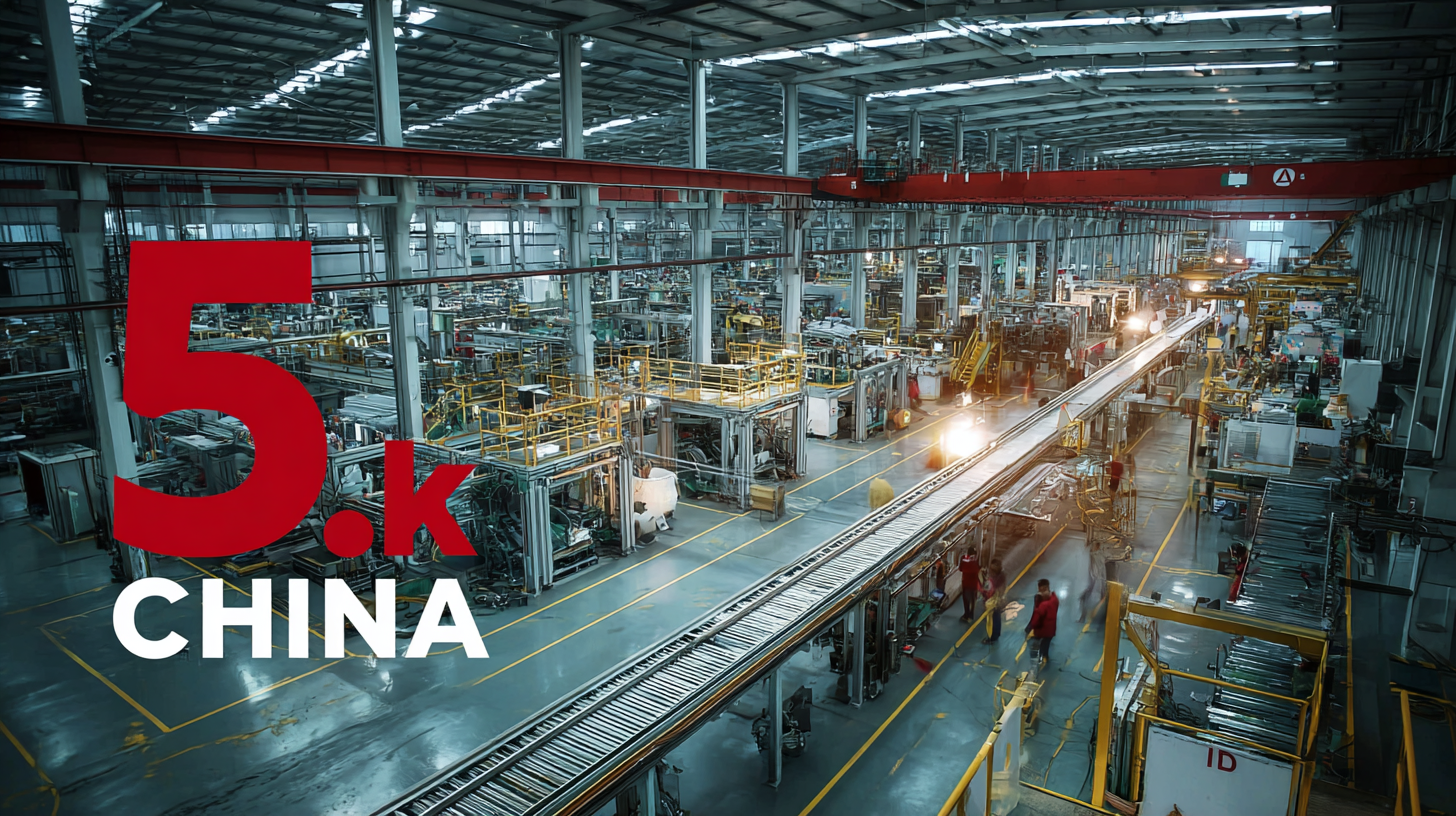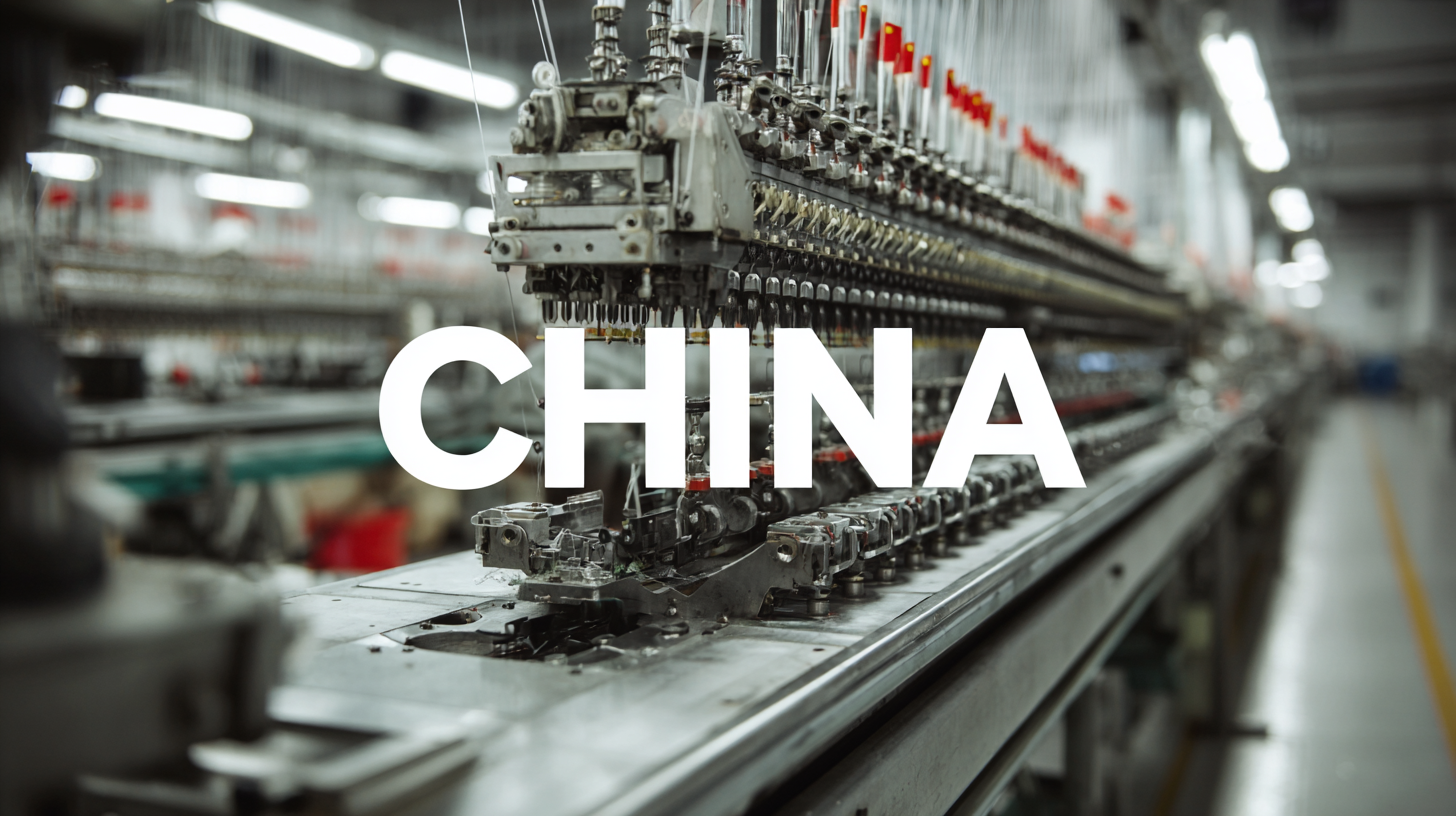
5 Best China Manufacturing Practices to Boost Your Production Efficiency
The landscape of global manufacturing is undergoing a significant transformation, with China remaining at the forefront of this evolution. According to a report by the McKinsey Global Institute, the manufacturing sector in China is projected to account for nearly 30% of the world's total manufacturing output by 2025, underscoring its pivotal role in the industry. To stay competitive and enhance production efficiency, businesses must adopt best practices that align with China's dynamic manufacturing environment. By leveraging advanced technologies, optimizing supply chains, and fostering continuous improvement cultures, manufacturers can significantly boost their efficiency and productivity.

This blog explores five of the best manufacturing practices utilized in China that can serve as a blueprint for companies looking to thrive in today's fast-paced market.
Best Practices for Streamlining Production Processes in China Manufacturing
In the context of enhancing production processes in China manufacturing, organizations are increasingly adopting agile practices that align with the latest advancements in technology and efficiency. This transition reflects a spectrum of organizational evolution rather than a fixed categorization, as seen in the insights from the McKinsey Greater China report. By fostering a culture where employees are empowered and skilled in self-management, companies can streamline operations and respond rapidly to market demands.
Moreover, the integration of advanced technologies, such as next-generation ERP systems, drives the transformation toward higher quality and greener practices in manufacturing. As the industry moves toward high-end, intelligent, and sustainable production, businesses are strategically outsourcing certain functions to leverage external resources effectively. This dynamic approach not only enhances operational efficiency but also positions manufacturers to thrive in a highly competitive environment. By embracing these best practices, companies in China are poised to not only boost productivity but also contribute to overall sustainable development in the manufacturing sector.

Leveraging Technology for Enhanced Manufacturing Efficiency
 Leveraging technology in manufacturing processes has transformed traditional practices into streamlined operations, allowing businesses to enhance their production efficiency significantly. Automation is at the forefront of this technological revolution. By implementing robotic systems and automated workflows, manufacturers can optimize labor costs and reduce human error, leading to a smoother production line. This not only accelerates output but also enables a consistent quality of products that meets customer expectations.
Leveraging technology in manufacturing processes has transformed traditional practices into streamlined operations, allowing businesses to enhance their production efficiency significantly. Automation is at the forefront of this technological revolution. By implementing robotic systems and automated workflows, manufacturers can optimize labor costs and reduce human error, leading to a smoother production line. This not only accelerates output but also enables a consistent quality of products that meets customer expectations.
Another critical aspect of leveraging technology is the use of data analytics. By collecting and analyzing production data in real-time, manufacturers can gain insights into their operations, identify bottlenecks, and predict maintenance needs. This proactive approach minimizes downtime and enhances overall productivity. Moreover, integrating Internet of Things (IoT) devices allows for monitoring of machinery health and performance, ensuring that processes remain uninterrupted and efficient. Adopting these technological advancements positions manufacturers to stay competitive in an ever-evolving market.
Quality Control Techniques to Minimize Waste and Maximize Output
In the competitive landscape of manufacturing, quality control techniques play a critical role in minimizing waste and maximizing output. According to a report by the American Society for Quality, companies that implement effective quality management systems can improve their operational efficiency by up to 40%. One of the most effective methods is the Total Quality Management (TQM) approach, which encourages continuous improvement and helps identify defects early in the production process, significantly reducing rework and scrap rates.
Another vital technique is the Six Sigma methodology, which focuses on reducing variability in processes. A study from the International Journal of Production Research states that organizations applying Six Sigma can achieve a decrease of 67% in defects per million opportunities. This enables manufacturers to not only enhance product quality but also deliver consistent output, ensuring customer satisfaction. By adopting these practices, manufacturers can lead their industry in efficiency and profitability while maintaining a commitment to quality.
5 Best China Manufacturing Practices to Boost Your Production Efficiency
| Practice | Description | Benefits | Efficiency Boost (%) |
|---|---|---|---|
| Lean Manufacturing | Streamlining processes to reduce waste and improve efficiency. | Increased productivity and reduced costs. | 20% |
| Six Sigma | Utilizing data-driven techniques to improve quality and minimize defects. | Higher quality output and customer satisfaction. | 15% |
| Just-In-Time Production | Reducing inventory costs by producing goods only as needed. | Lowered holding costs and improved cash flow. | 25% |
| Total Quality Management | A company-wide approach to maintain quality standards. | Enhanced efficiency and reduced waste across all departments. | 18% |
| Kaizen | Continuous improvement in small, incremental changes. | Sustained performance improvement over time. | 10% |
Employee Training Programs for Boosting Productivity in Manufacturing
In today's competitive manufacturing landscape, employee training programs are essential for enhancing productivity and operational efficiency. According to a report by the Council on Competitiveness, companies that invest in training their workforce see a 24% higher profit margin compared to those that don’t. This underscores the vital role that a skilled and knowledgeable workforce plays in achieving optimal production outcomes.
Manufacturers should focus on continuous training initiatives that not only enhance technical skills but also foster soft skills such as teamwork and problem-solving. A study by the National Institute for Learning Outcomes Assessment revealed that employees who receive regular training have a 12% higher engagement level, which directly correlates with improved efficiency on the shop floor. Implementing tailored training programs that align with specific operational needs can significantly boost production metrics, thereby driving overall company growth and competitiveness in the global market.
Implementing Lean Manufacturing Principles for Greater Efficiency
Implementing Lean manufacturing principles in China’s manufacturing landscape can significantly enhance production efficiency. Lean manufacturing focuses on the reduction of waste while ensuring quality and continuous improvement. By adopting techniques such as value stream mapping, manufacturers can identify bottlenecks and areas of waste, enabling them to streamline processes. This not only reduces unnecessary costs but also speeds up production cycles, allowing for quicker turnaround times.
Furthermore, engaging employees in the lean journey is crucial. By fostering a culture of continuous improvement, workers are encouraged to share insights and propose solutions. This collaborative approach not only enhances employee morale but also leads to more innovative practices that can further optimize production. Additionally, investing in training and development ensures that all team members are equipped with the skills necessary to contribute effectively to the lean transformation. As a result, manufacturers can achieve greater efficiency and adaptability in an increasingly competitive market.
